History is alive in Montgomery, and confronting that history in person is necessary in order to fully reckon with the truth of racial injustice and inequality in America. Once home to the largest population of enslaved Black people in the country — and, later, the heart of the Civil Rights movement — the city has been witness to some of the starkest horrors and most impassioned demonstrations of courage and hope in recorded Black history.
NationSwell’s recent 3-day immersive experience in Montgomery — “A Journey to Justice” — was designed in partnership with Bryan Stevenson and the Equal Justice Initiative (EJI) with an eye toward the ways being in a place can contribute to a deeper understanding of justice and equity. Witnessing and confronting truths allowed for greater reckoning with the brutality of our past — and allowed us to more deliberately chart the course forward.
By immersing ourselves in truth, our aim with “A Journey to Justice” was to shine a spotlight on our present — and to bring cross-sector leaders together to engage in locally specific, community-centric experiences and conversations that drive toward action.
While difficult to translate, the emotional experience we shared in Montgomery was in turns painful, visceral, sobering, and urgent. We left the city feeling closer to the truth — and to each other — and with a set of clear imperatives that we’ll carry forward with us as we strive to be stewards of narrative and agents of change in the organizations we lead and serve.
Below is a summary of our immersive experience.
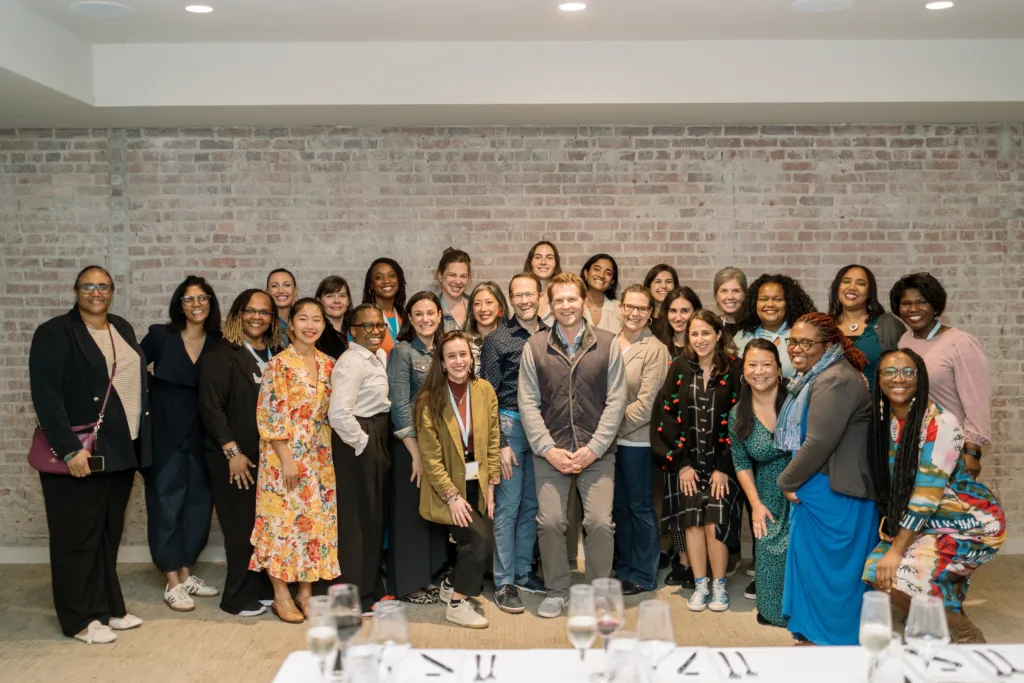
Day One
Guided bus tour of Montgomery
We kicked off our time together with a guided tour of some of the city’s key sites with Stephen from More Than Tours, with an eye toward the role each location played in Montgomery’s Black history. The city’s northeast corner abuts the Alabama River, where our journey began. From the Muscogee Creek tribe’s forcible displacement from the Alabama River basin beginning in the early 17th century and the terror of the trans-Atlantic and domestic slave trades, to the Civil Rights history that is now synonymous with Montgomery itself, each stop on the tour served as an anchor to history — and as a living reminder of the fact that we can never fully sever ourselves from our pasts.
As we made our way across the city, we made stops at Martin Luther King Jr.’s parsonage — the site of an attempted targeted bombing in 1956 following the success of the Montgomery bus boycott that still stands — and subtle monuments to the slave trade, including streets with names like “exchange” or “commerce,” that serve as living references to the city’s slave-owning past.

Our final stop on the tour was a visit to the More Up Campus, where we learned the stories of Minnie Lee and Mary Alice Relf — two sisters who were the victims of a federally-funded, forced sterilization campaign in 1973 — and the “Mothers of Gynecology,” Anarcha, Lucy, and Betsey — the enslaved experimental subjects of the so-called “father of gynecology,” J. Marion Sims — who are memorialized by stunning 15-foot metal monuments.
Day Two
Legacy Museum visit
Located on the site of an old cotton mill, the Legacy Museum was founded and opened by EJI in 2018. Its layout is designed sequentially: The first thing visitors hear are the crashing waves of the Atlantic Ocean before making their way through sections dedicated to slave auctions, the Reconstruction era, terror lynchings and the horrors of Jim Crow, the Montgomery Bus Boycott and the Civil Rights Era, and the echoes of slavery that can be heard today in the American legal systems and mass incarceration.
Although we had three hours to experience the museum, the overwhelming consensus among attendees was that we could have spent days working our way through all of the rooms and material. In addition to historical and text-based exhibits, the museum also features first-person historical accounts, interactive content, small theaters playing short films, and stunning art installations designed by Black creators.
Every piece of the Museum was thoughtfully, lovingly, and intentionally curated and produced to honor and tell the stories of African Americans that were stolen, lost, separated, brutalized, and killed. By design, the Museum does not allow photos and videos throughout the experience so that every visitor can go on a full journey of truth.
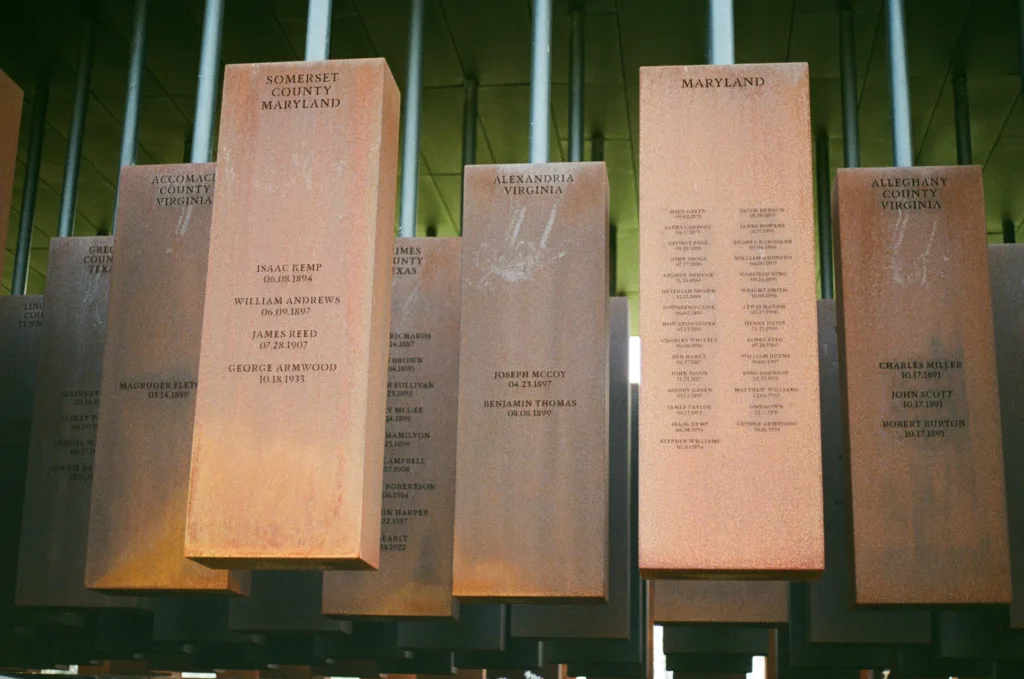
National Memorial for Peace and Justice and conversation with Bryan Stevenson
The National Memorial for Peace and Justice is the first memorial in the U.S. dedicated to the victims of racial terror lynchings. A visceral example of how art and place can honor the gravity of history, the memorial is comprised of more than 800 steel blocks — one for each county where a racial terror lynching took place — which hang from the ceiling at increasing heights.
Situated on 6-acres of lush grass, the memorial is sacred ground that pays tribute and rectifies the little that has been done to acknowledge the African American lives lost due to racial terror killings. The memorial also comprises a more recent effort by EJI — one also deeply grounded in the importance of place — to recover and preserve soil from each known lynching site as a tangible way for communities to connect with, process, and grieve the past.
Later, we heard from Bryan Stevenson himself, who told us about his experience advocating for the value of human life during his time as an attorney and about the importance of narrative — and of doing the work required to change the narrative.
Bryan also spoke to us about the three pillars of truth-telling that are necessary in order to create a new era of reparation and repair: Confronting the truth — and not shying away from the real harm that was done; creating the space needed to take action; and holistically assessing what a true vision for repair might look like. In failing to formally acknowledge the sins of our past, Bryan said, we have denied the American people the grace, mercy, and liberation that comes with truth-telling and atonement.
NationSwell Signature Dinner
After a very full and weighty day together, our group reconvened for a NationSwell Signature Dinner, Montgomery edition. Together, we unpacked the moral imperative we were all feeling to bring the things we’d learned and experienced back to our own communities;to continue the work of dismantling harmful narratives and systems of oppression.
Attendees expressed being particularly struck by the power of proximity to hold space for tragedy and joy at the same time — and discussed what it means to maintain the strength, energy, and lightness required to continue the work of the Civil Rights Movement.
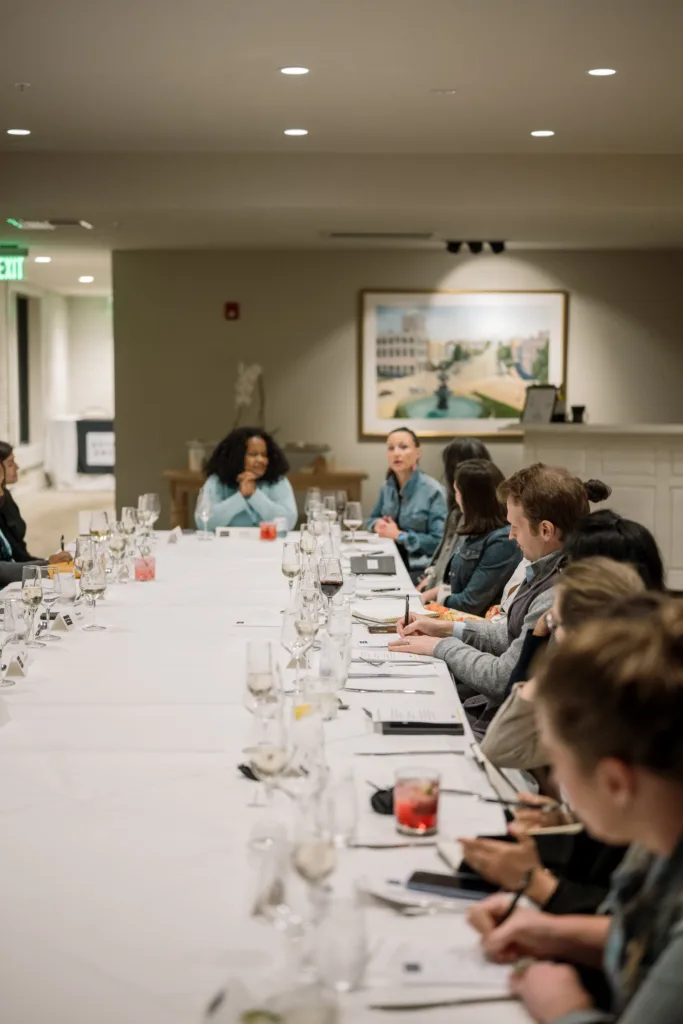
Day Three
Breakfast at the Bricklayer’s Hall, Hosted by GirlTrek
During the Civil Rights Movement, the Bricklayers Hall in Montgomery served as a key meeting point and headquarters for Martin Luther King, Jr. and the Montgomery Improvement Association as they planned actions like the Montgomery Bus Boycott. And in the summer of 2023, GirlTrek signed the deed on the Bricklayer’s Hall, with plans to continue its civil rights legacy in the names of 1.3 million Black women across the country.
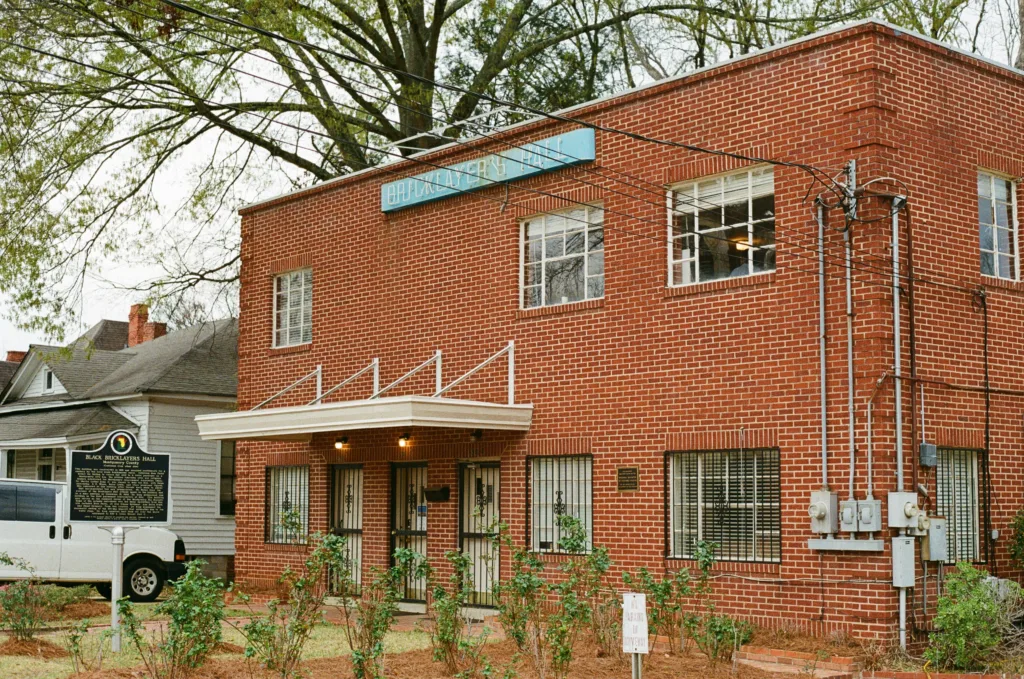
A sturdy building made from bricks laid by the Black members of the Bricklayer’s Union, the space has been remarkably preserved and has remained largely unchanged over the last 60 years. A metal fan in the corner of the room still stands in the same place where Dr. King was photographed speaking to community members; a chess board sits on a side table, adorned with old soda bottle caps that could double as makeshift pieces.
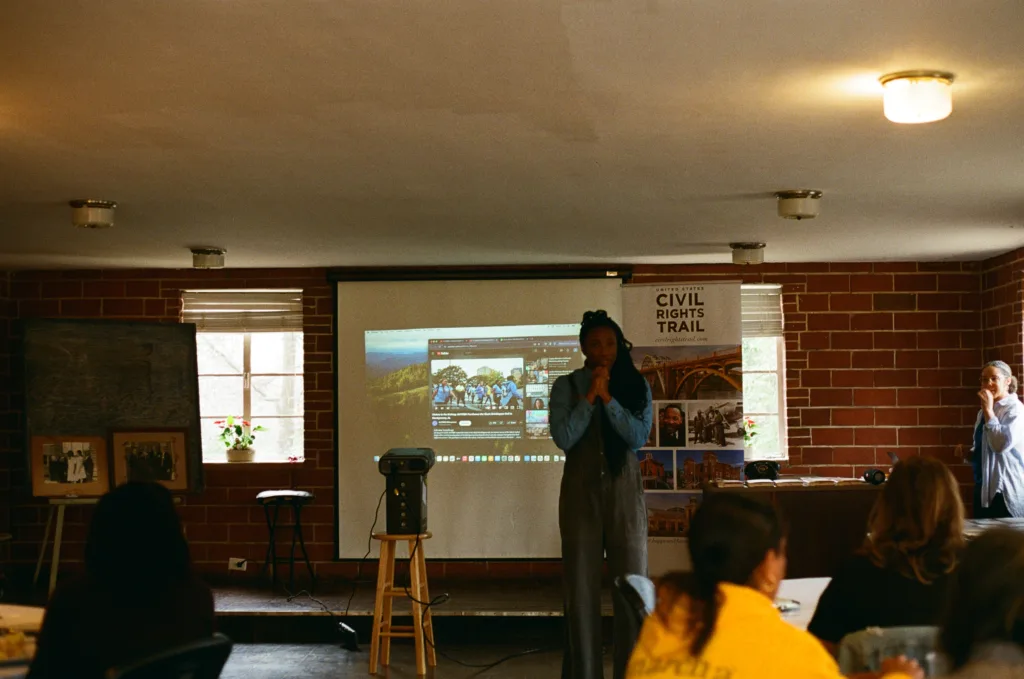
Martha Hawkins, who cites the cooking and radical activism of former-MLK, Jr. associate Georgia Gilmore as being among the inspirations for her own restaurant, Martha’s Place, provided breakfast for us on our final day. Over biscuits and grits, members came together to share action-oriented reflections. We discussed several potential avenues for collaboration moving forward, and NationSwell pledged to keep our group connected and close so that we can continue to build on the power of place-based action and the diverse experiences and expertise of the leaders who were in the room with us.
We encourage you to read more about our different Collaboratives and to contact us to get involved if you see one that resonates with you and your work.

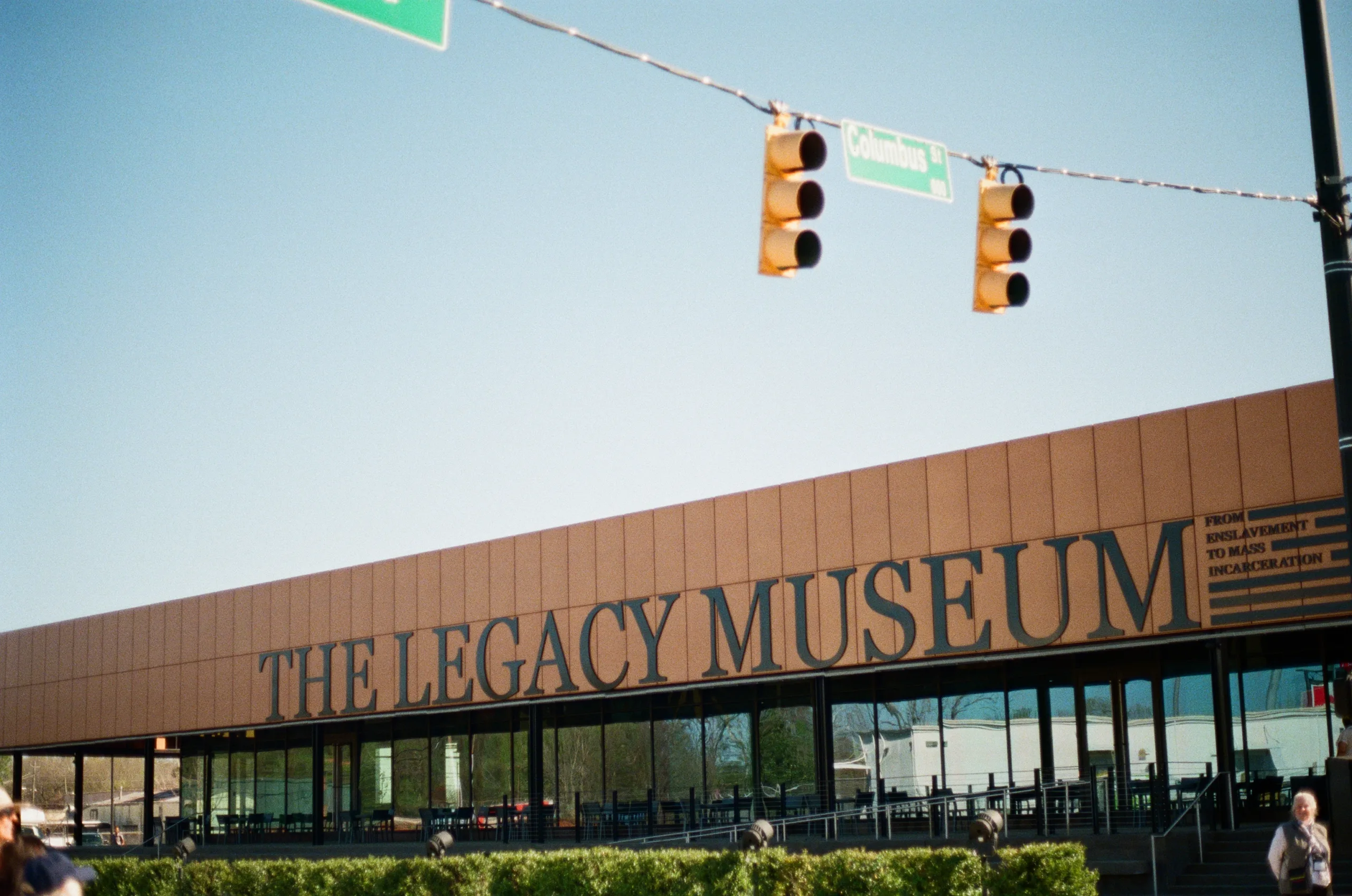 "
"